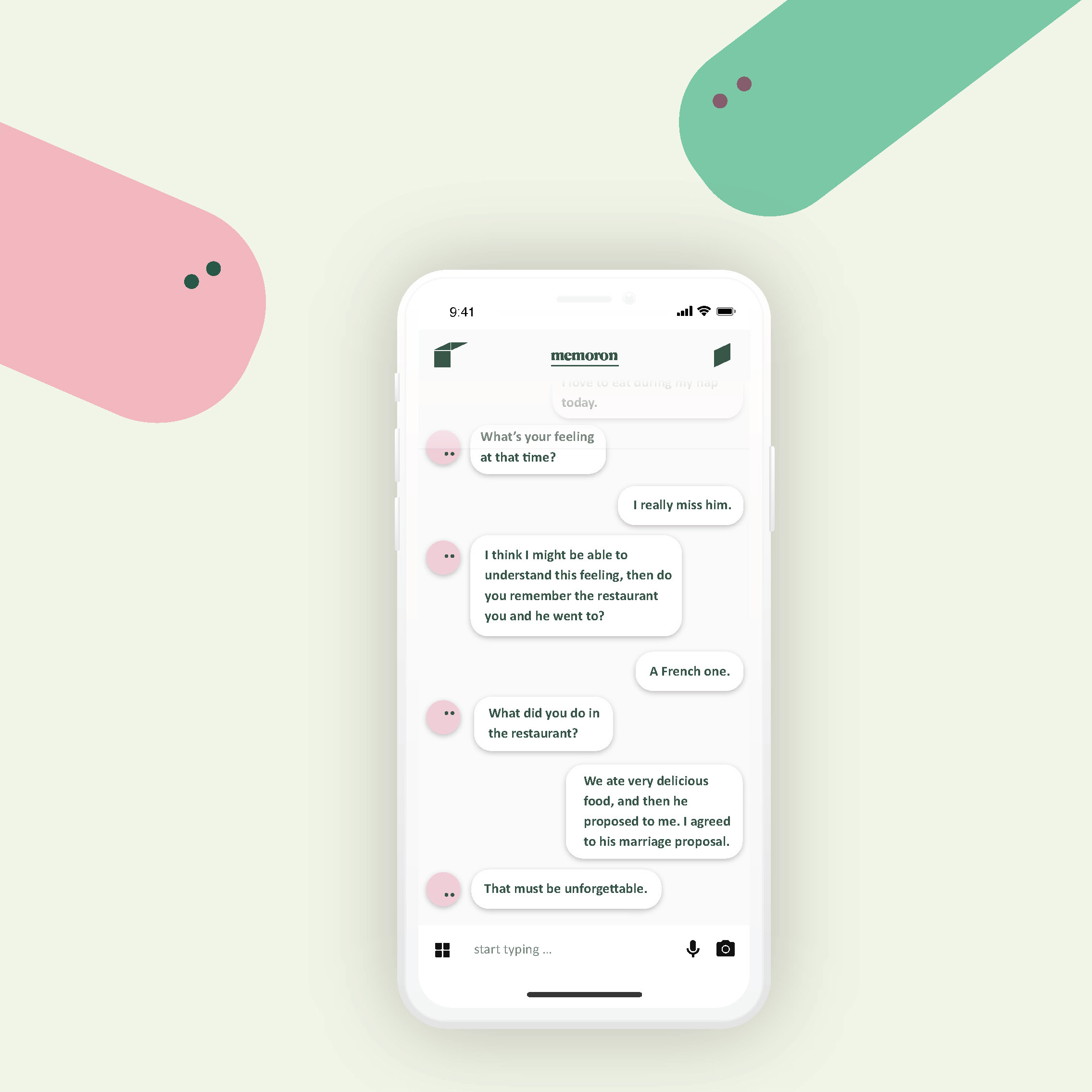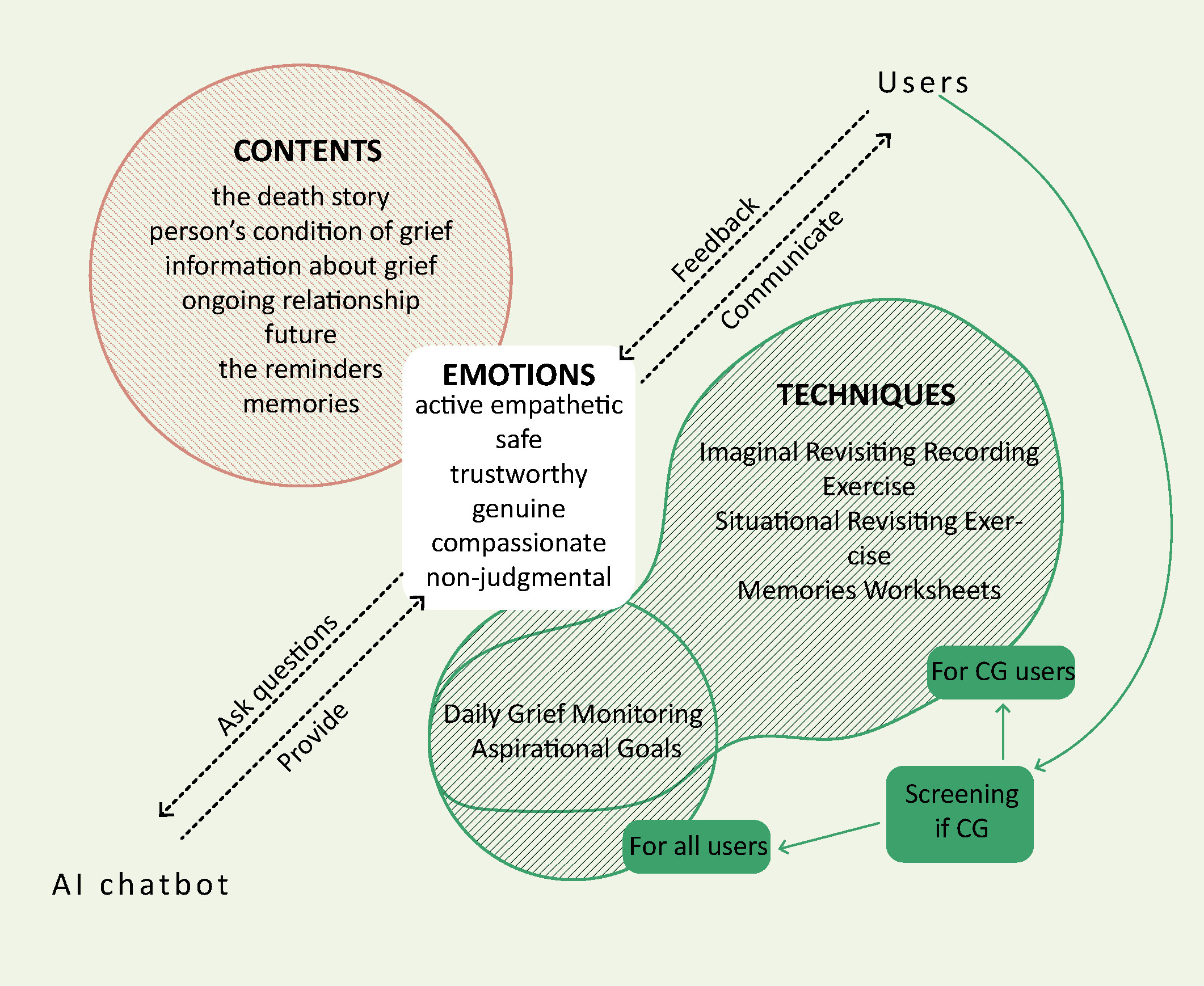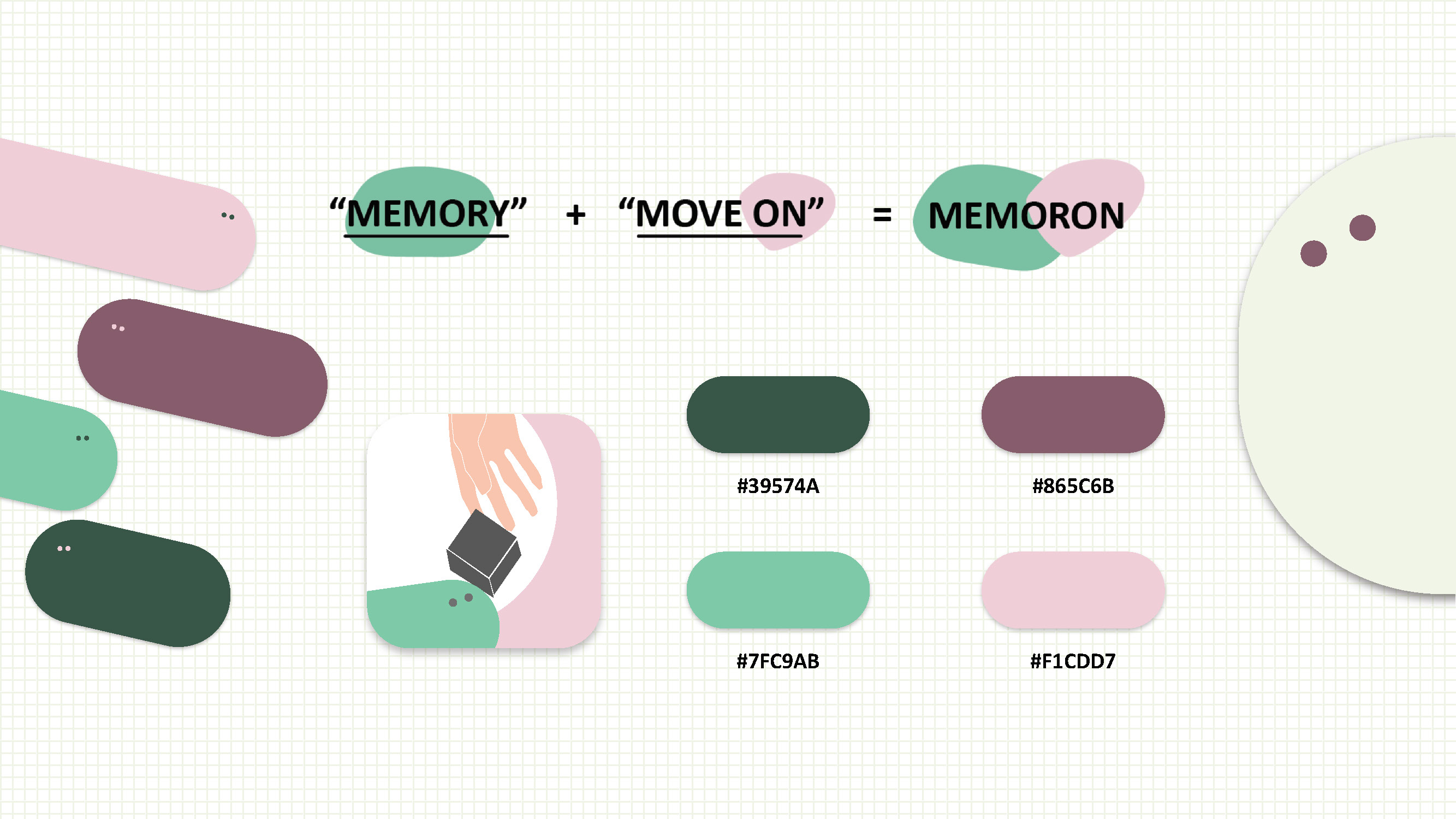Memoron
How to provide support to people in grief with AI technology?
Design for people in greif
Barcelona, Spain
Personal work
Prof. MONGUET, Josep Maria
2020.02-2020.07
In the literature I searched for, researchers estimated that 2-3% of the population is affected by Complicated grief — a kind of pathological grief, not to mention that more people are suffering in grief and do not meet the criteria for Complicated grief. Fortunately, the grief field is currently abundant in research, and people can benefit from the results of these researches. In my project, I Explored how to translate this academic and clinical research into something understandable and accessible to all.

View full paper ︎︎︎
Literature review
The modern theory of grief in Western culture began with Freud (1917) and has been developing for over 100 years (Rothaupt & Becker, 2007). As many researchers explore and interpret, the secrets about grief, unique human experience of life in the face of death, are slowly being unraveled.
People experience two stages of grief — Acute Grief and integrated grief, and each stage has different physical and psychological symptoms (Shear, 2015). The last 30 years of studies have also defined the Complicated Grief that requires intervention therapy (Shear, 2015). The development of clinical psychology has also contributed to the development of clinical knowledge in the management of grief. Shear et al., who are experts in the field, have also proposed an evidence-based structured treatment for complicated grief — Complicated Grief Treatment (Shear & Bloom, 2017). Although the clinical knowledge of managing grief is constantly being developed, there are still difficulties that have not been addressed.
From the literature I have outlined two main difficulties:
Low penetration rate of information: many people suffer from acute grief or complicated grief, but the knowledge in this area is not widespread enough;
the effective treatment for CG is also not widespread enough. There are not many clinicians who fully master the knowledge and treatment methods in this field. For clinicians without relevant knowledge, the treatment method will be more challenging to master. There is also clinical evidence that when people understand grief, they can recover on their own. However, some people currently cannot find a easy and comprehensive way to understand grief.
The limitations of the clinician’s ability: clinicians are unable to provide timely assistance during treatment because they usually meet once a week; in clinical treatment, the clinician will affect or even terminate the treatment because he cannot bear the patient’s loss
(Shear & Bloom, 2016; Iglewicz et al., 2020); some clinicians cannot effectively use positive psychology during the whole process, and so on.
see full paper ︎︎︎
Process of design
The whole design process was interlaced by these parts: case study, selection of technology, field research, and idea iteration.
By analyzing and learning some current products, I decided to use Artificial Intelligence (AI), which has unlimited potential in psychology. Its ability to integrate, extract information, learn, etc., can solve the difficulties of managing grief to some extent.

Diagram about why choosing AI?
Innovation technologies I used
Innovation-research map
Design of a consensus
Reverse brainstorming
If you were an animal? | How to do?
Roleplay of participants
more info in my professor’s website
With the assistance of innovative technology, I generated the initial version of the design concept. I made four adjustments after the continuous research, and finally, my design concept was determined as follows:
It is not about helping people recover from grief. It is just one of the various methods of providing support.
It is an automated communication assistant that provides grief-related information through simple conversations and guides grief users to start Grief monitoring and Aspirational goals - two basic useful techniques used for managing grief. For users screened as CG, more structured activities, which are extracted and redesigned from CGT, are provided.

Diagram of Idea 5.0
see full paper ︎︎︎
The design
The design using the AI chatbot provides most of its services through conversations, and the user's interaction with the chatbot is predominantly conversational. A monolithic form of service that makes the system's response extraordinarily important.
I designed the system's general process, the different levels of AI chatbots, the chat process for all users, and the structured activities for CG users.

Flowchart of Structure Activities For CG User
The main colors of the APP are warm red and energetic green, with Band-Aid look as the main image, while the APP LOGO has positive hope expectation.

Design material
![]()
Main Pages

Main Pages
Conclusion
In the process of confirming the design concept, I realized the importance of multi-disciplinary field research in a cross-disciplinary project. At one point in doing my project, I had a dilemma where I felt like I couldn't find my way and that everything was just my imagination. For example, AI learns the data of the person who died to become the loved one who died to help the person in grief, but no evidence has been found to prove it. My early ideas also included stakeholders - government and company - in the design, and that direction never progressed either, because I didn't know what data was appropriate to send back. It wasn't until I had discussions with people in different fields related to my project that I realized that my ideas were too wild and out of touch with reality. So I started with existing research instead, and slowly found my way.
This project also made me realize the importance of trade-offs. As my research progressed, I had more and more ideas, and the system became more and more complex. After discussing with people from different professions, the feasibility and importance of different ideas became clearer. Finally, I chose the essential and feasible direction of the ideas to go deeper. Otherwise, I will always float on the surface and cannot go deeper into the project. And other ideas from the process can also be used as future thinking directions for the project.
see full paper ︎︎︎
See more files in UPC